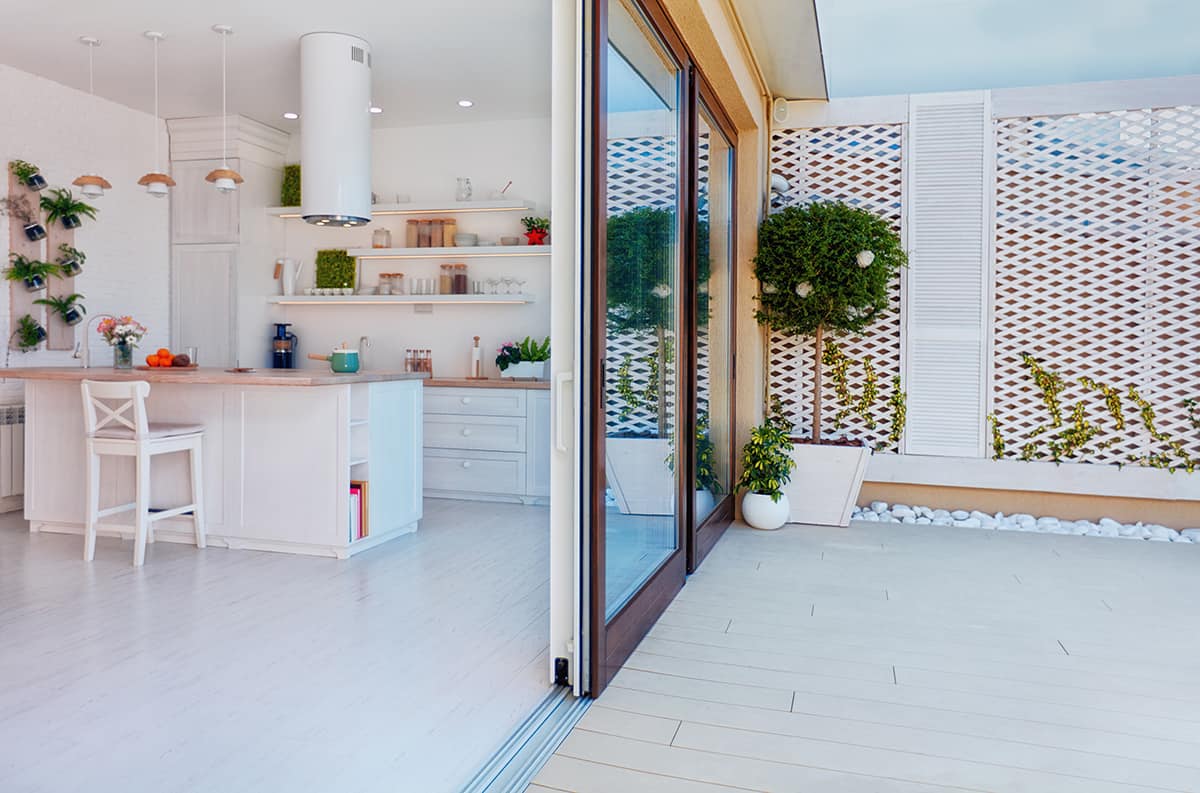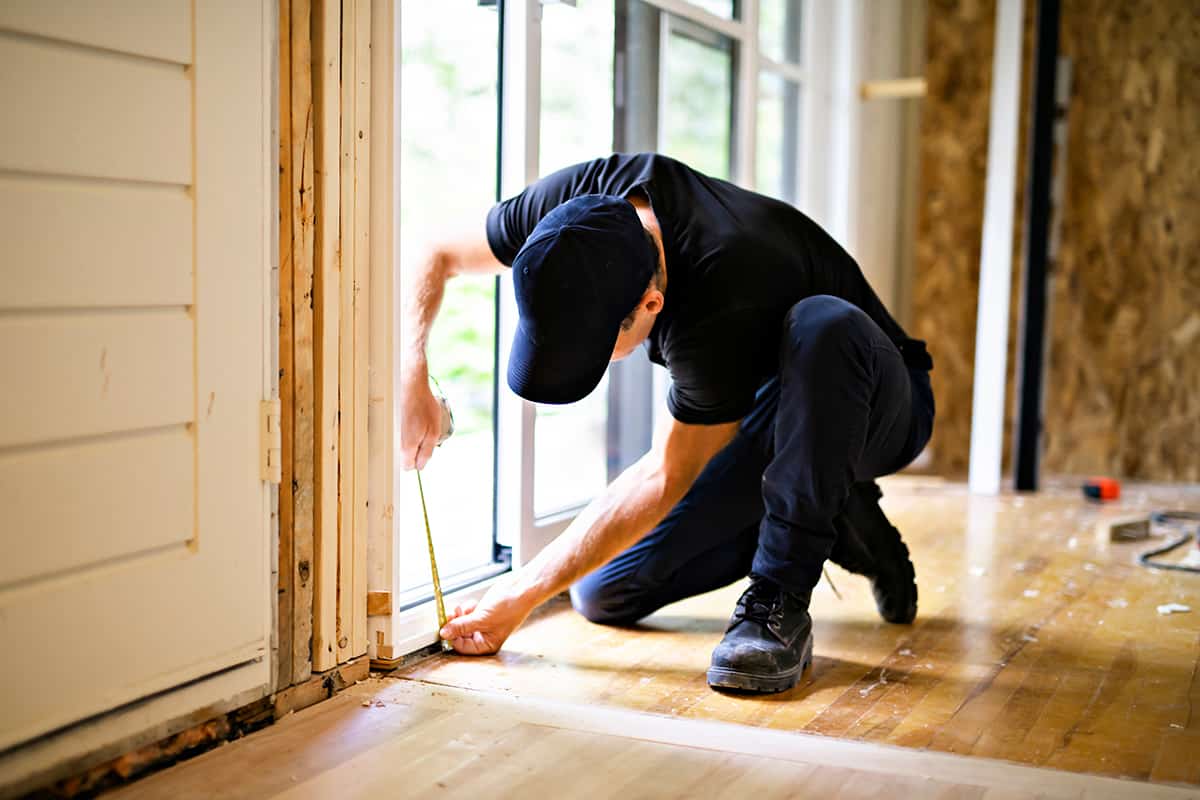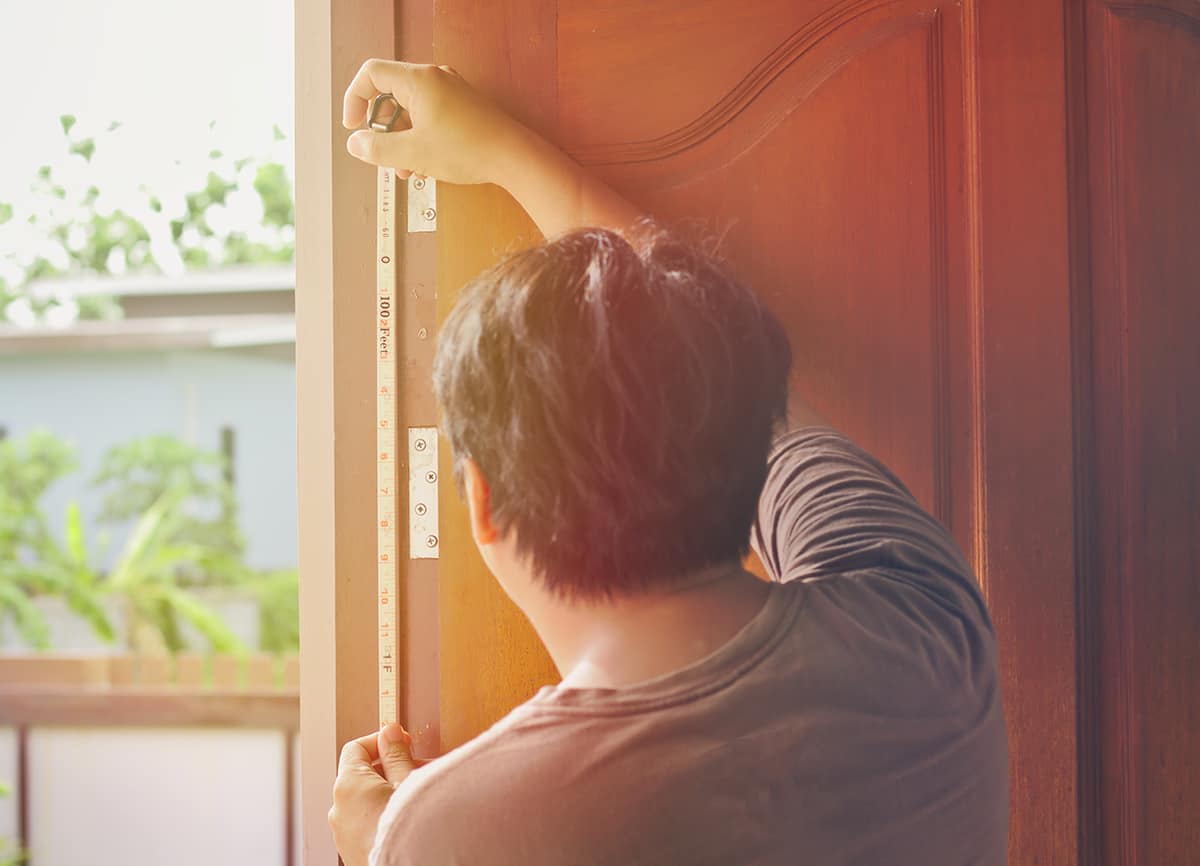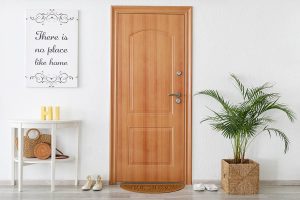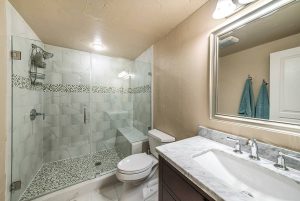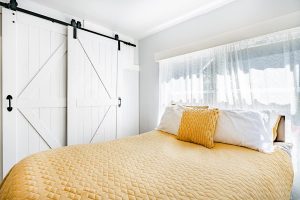Sliding patio doors might not seem like complicated pieces of hardware, but they can baffle homeowners who have never had to install or replace one.
Case in point: homeowners sometimes wonder if their sliding door can be reversed so that it slides on the other side instead. To begin with, let’s define what a sliding patio door is and its basic operating mechanism.
Then we’ll look at whether or not you can reverse them, why you may want to do so, and how to go about it.
What is a Sliding Patio Door?
Sliding patio doors are, by definition, sliding doors. If you’re looking at a picture of a sliding patio door and thinking that it can’t be reversed because the tracks in the frame are not visible on both sides of the door—you’re right! That is why they don’t call them “sliding glass doors.”
If you want to reverse your sliding patio door, then you need to know what type of track system it uses. There are two main types: T-tracks or P-tracks (also known as piano tracks).
Why You Would Want to Reverse Your Patio Door?
Patio doors are often used to replace the main entrance door, but sometimes there are reasons you might want to reverse your patio door. Here are some of them:
- To make the door easier to open and close
- To make the door easier to clean (like when kids have been playing in it)
- To make the door more secure, especially if you live in an area where there is a lot of crime
- To improve energy efficiency by keeping out heat or cold air so that you don’t have as much wasted energy heating or cooling your house unnecessarily.
- For aesthetic reasons: You may like having one side open so that light can shine through into other parts of your home.
Reversing a Sliding Patio Door is Possible, but It’s Not Easy
Sliding patio doors can be reversed, but it’s not a simple process. A sliding patio door is made up of several parts that must be disassembled, re-routed, and put back together again.
This means you will have to remove the hardware, weather stripping, and tracks in order to reverse the direction of your sliding patio door. The most difficult part of this process is that you cannot simply turn the door around because of how it was originally installed. You will need to relocate every part before attaching it again in its new orientation.
How To Reverse Your Sliding Patio Door
In order to reverse your sliding patio doors, you first need to remove them from the track. This can be done by unscrewing the panels that hold them in place. After removing these panels, take out any screws from the door frame and slide it out of its track.
Next, install your new sliding patio door in reverse fashion—first installing it into the frame of your home and then placing it onto its tracks for a secure fit!
Double-Check The Door’s Operation
After you’ve made sure that the door is not jammed and it’s not damaged, it’s time to check for other issues. If the door is stuck, try lubricating it with a bit of WD-40 or another lubricant.
If this doesn’t work and you are still having trouble opening your patio door, try moving something heavy like a refrigerator in front of the frame so that when you attempt to open the sliding glass door again, both sections of glass will be forced together.
This should provide enough pressure on both sides of your sliding patio door to unstick them from each other and allow you to easily slide them apart again!
If none of the above steps work, then there’s likely an issue with one of your tracks being bent or broken. This can happen over time due to maintenance issues such as dirt buildup or improper cleaning techniques (such as using harsh chemicals). In order for a company to determine whether or not parts need replacing, they’ll need some pictures taken beforehand.
How to Install Sliding Patio Doors
Before you begin, make sure you have all of the tools and materials listed below:
- Measuring tape
- Pencils (2)
- Spirit level or laser level (1)
- Screwdriver(s) (1-3)
Measure the door frame
- Measure the height of the frame.
- Measure the length of the frame, from top to bottom (or left to right).
- Measure the width of your opening from side to side (or front-to-back).
- Finally, measure how tall or short your opening is; this will help you determine whether or not it’s possible for a sliding door to work in your space
Prepare the frame
The first step in installing a new door is to remove the existing one. This can be done with a pry bar, but you may need to use more force than expected and risk breaking the frame. It’s best if you have someone help push while you pull so that they can brace themselves against any damage that might occur.
Once your old door has been removed, take a moment to remove any debris from inside the frame. Also, inspect it for damage from previous attempts at removal or other strange occurrences (like being used as target practice by neighborhood kids).
Take note of any cracks or holes so that you can repair them before installing the new door in place of this one.
Shimming the door
We’re almost done! The installation is almost complete, but there’s one more step: making sure the door is level. This can be tricky, and it’s easy to get it wrong, so follow these steps carefully.
- Shimming the center rollers is easy enough—just add a shim or two on either side of each roller until it’s level with its neighbor on both sides.
- If your door has a track at the top that sits higher than the bottom of the jamb (as most do), you’ll need to shim this as well by adding some material under it on each side until it matches up with everything else in terms of height.
Once you’ve taken care of those details, all that’s left is installing an automatic closer for safety purposes (and maybe a screen door), and you’re ready for summer!
Install the doors
- Hinges facing inward
- Hinges facing outward
- Hinges facing outward and handles facing inward
Finish up
Once you have installed the door, make sure everything is level and secure. Then check for proper weatherstripping. Check the locks and hinges. Make sure that your handle works properly and doesn’t stick in place when pulled or pushed open.
And finally, make sure that there are no gaps around your new patio door frame so that cold air can’t get in during winter!
Types of Sliding Patio Doors
The options for sliding patio doors have expanded in recent years. Here are four of the most popular types currently on the market:
Panoramic Doors
Panoramic doors are ideal for creating a seamless transition from the interior of your home to the exterior. For example, if you have a large room with high ceilings, then this would be the perfect type of door for it. It will be able to span the entire width of your room and provide a great view outside.
Multi Slide Patio Doors
Multi-slide patio doors are the most versatile of all sliding patio door types. They can be installed in a single or double-door configuration, and they can be used for both interior and exterior doors. These types of patio doors can be installed in residential as well as commercial buildings.
They are made up of two or more panels that slide in different directions, so you have options for how much light you want to let in, which makes them great for rooms where you don’t want glare from the sun but still need views outside your home.
Sliding Glass Doors
Sliding glass doors are the most common type of patio door, and they come in a wide range of styles.
Sliding glass doors are typically made of either glass or wood, with the option to use both materials in one door for an upscale look. They typically have a track attached to them so that they slide open and closed smoothly without any need for hinges or handles on the inside or outside of your home.
Sliding French Patio Doors
French patio doors are the most popular style of sliding patio door in America. They offer an elegant touch and are easy to clean, which is why they’re so popular. The negative side is that they cost more than other types of patio doors, but if you have the budget, it’s worth it!
French doors are usually made out of glass panes separated by wooden or metal frames. They often come with an additional panel at the bottom, which gives them more stability when open and allows easier access from a wheelchair or walker (this feature makes them perfect for people who have mobility issues).
If you want to add some privacy but don’t want to block all light from coming through your windows and turning into glare on your TV screen, installing a French door is a good choice. French patio doors can be fitted with shades or curtains that let some light pass through while keeping prying eyes at bay.
Conclusion
And there you have it! Whether you’re looking to replace your old sliding patio door or install a new one, we’re here to help. We specialize in customizing doors and windows for our customers, so feel free to contact us if you have any questions.
